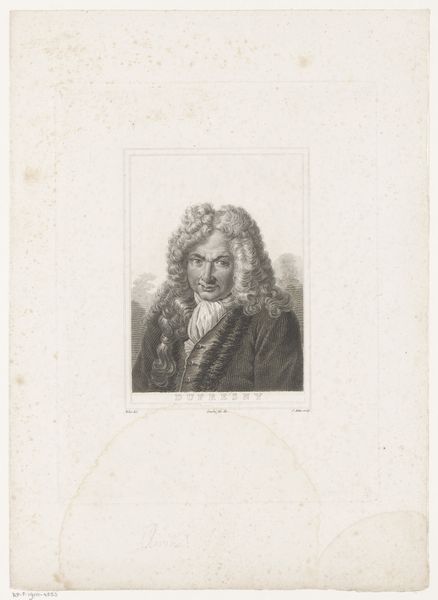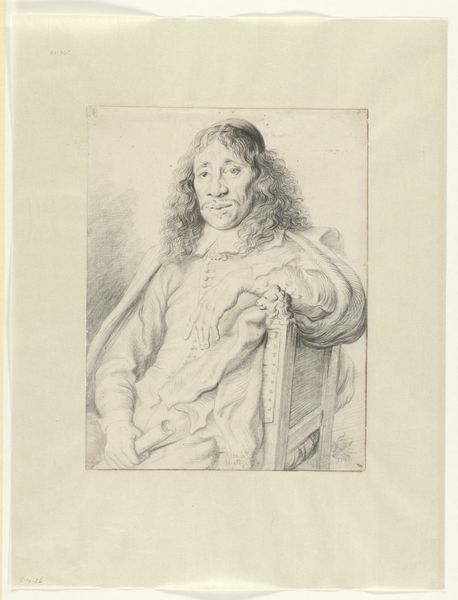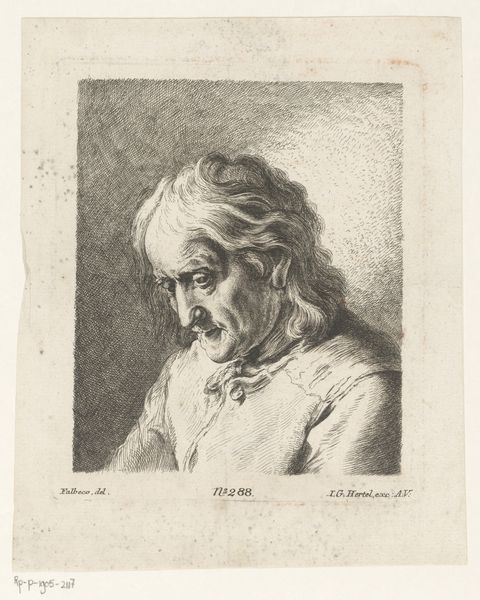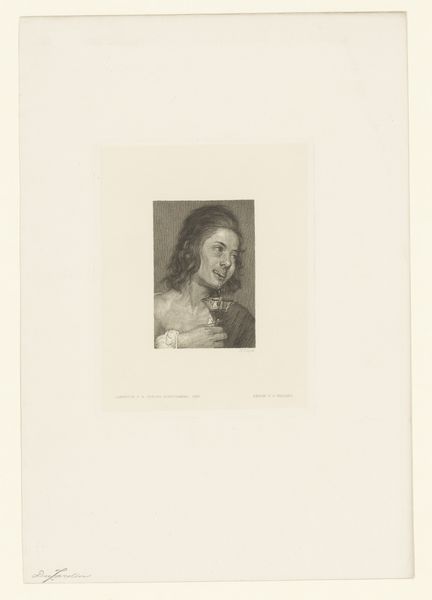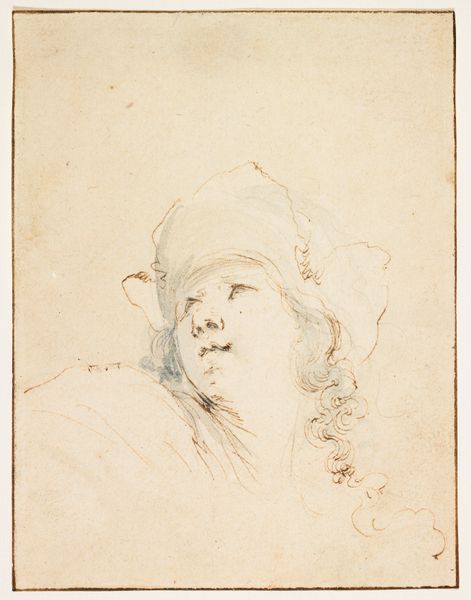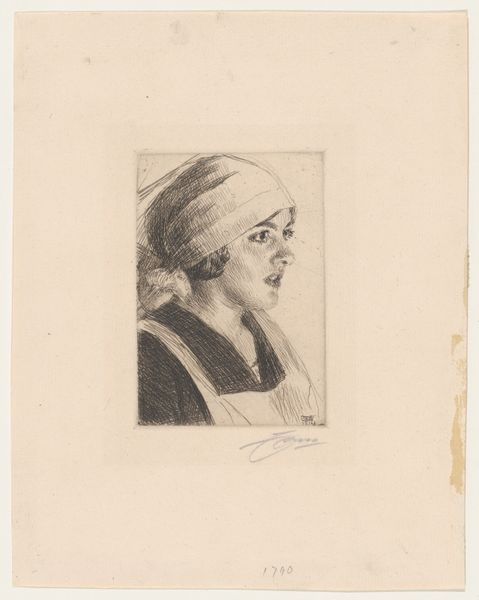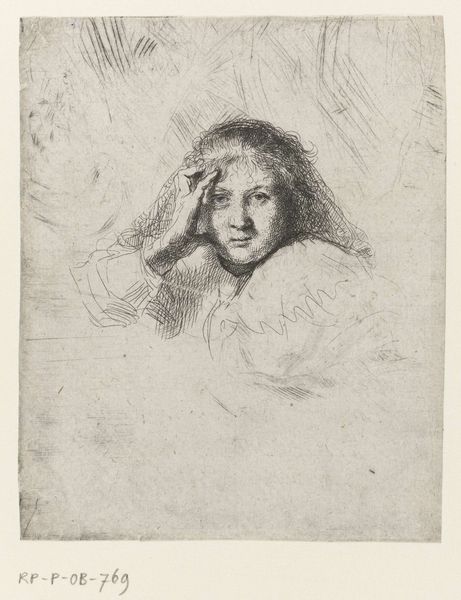
print, etching, engraving
#
portrait
#
baroque
# print
#
etching
#
old engraving style
#
figuration
#
engraving
Dimensions: height 171 mm, width 124 mm
Copyright: Rijks Museum: Open Domain
Curator: Let’s consider this engaging image titled “Lachende man,” created by Pierre Filloeul in 1734. It’s rendered as an etching, which would have involved some very meticulous work by the artist. Editor: The effect is immediately striking; there's a rawness to it. It makes you wonder about the conditions and effort required to produce it. Is it just me, or is there something almost unnerving about his grin? Curator: Well, the choice of etching as a medium certainly influenced the aesthetic. As a print, it was relatively accessible at the time. These kinds of images were important for circulating ideas about humor and portraiture throughout society. The democratization of image dissemination, if you will. Editor: True, but look closely. See the clear mark-making and the layering. The engraving emphasizes the subject's...ordinariness, I suppose. It’s almost like a social commentary made by someone closely acquainted with the production. What does "Lachende man" mean exactly? Curator: “Laughing Man.” His slightly exaggerated features and very genuine smile align with the Baroque period’s interest in capturing intense emotion, albeit in a very unassuming way. Editor: And it’s intriguing, isn’t it? Because he is “laughing,” but the slightly rough quality of the etching itself gives it this unsettling undercurrent. It’s mass-produced, but the craft aspect offers so much to think about concerning the artist's viewpoint. Curator: Indeed. Its place in society really determined how images like this would be understood, particularly portraits of people outside the upper echelons. Editor: Ultimately, an everyday act made visible through skilled labour, reproduced on a wide scale. You almost forget, at first, how laborious the work that generates the print is, which I guess in a way, connects to his social position represented within. Curator: And it reflects how portraiture gained a new democratic impulse in the early modern period. The “Laughing Man” invites us to reconsider how art embodies and broadcasts humour and humanity itself. Editor: So much consideration embedded in its production makes you contemplate how the subject or maker valued its potential audiences. A true testimony to art as cultural creation.
Comments
No comments
Be the first to comment and join the conversation on the ultimate creative platform.
